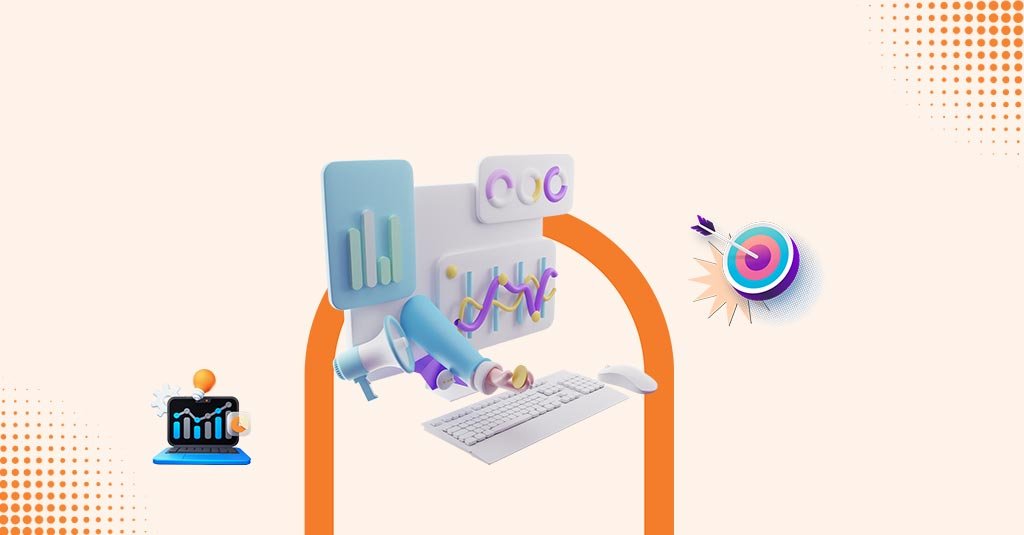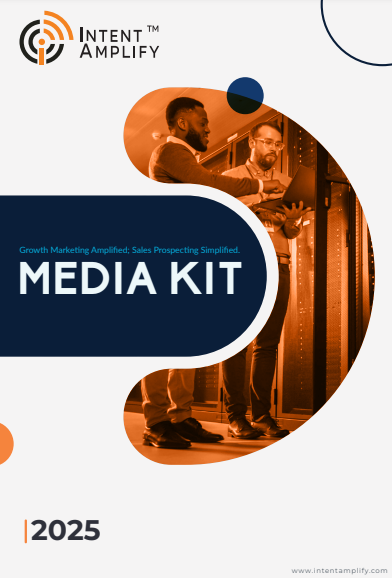
Account-Based Measurement in 2025: 3 AI-Powered Capabilities to Accelerate Your B2B Pipeline
- Last updated on: May 7, 2025
In 2025, Account-Based Measurement (ABM) is no longer a “nice-to-have,” it’s mission-critical. Traditional MQLs (Marketing Qualified Leads) are living on borrowed time, and smart B2B teams know it. Gartner confirms that today’s B2B buying is far from linear; prospects loop back and forth between stages like problem discovery, solution exploration, and vendor comparisons.
This complexity demands a measurement strategy as dynamic as the buyer’s journey itself. Vanity metrics are dead weight. High-growth B2B marketers crave precision: clear signals, real-time insights, and pipeline results that align sales and marketing like never before.
This is where AI-powered Account-Based Measurement steps in. Let’s unpack the three capabilities redefining how revenue teams measure and accelerate pipeline in 2025, with examples, tips, and pitfalls to avoid.
A. Predictive Intent Intelligence: See Buyer Readiness Before They Raise a Hand
The old way: Traditional lead scoring lumps all engagement together, every click or page view weighs the same, whether it’s curiosity or genuine purchase intent.
The AI way: Predictive intent intelligence flips the script by tapping into a wider universe of signals. Machine learning and NLP scan third-party data, think content consumption trends, product comparisons, review sites, hiring patterns, and social conversations, to spot accounts that are actively researching solutions like yours.
Why it works:
A study by TOPO found that companies using intent data drive 2.5x higher conversion rates compared to those who don’t. Why? Because you reach prospects while they’re forming a shortlist, before your competitors even knock on the door.
Example:
Imagine your ABM platform detects that five contacts at a Fortune 500 account are reading articles about cloud migration and attending webinars about data security. With predictive scoring, your SDRs prioritize this account immediately, tailoring outreach with laser focus.
How to get started:
- Subscribe to reputable intent data providers (Bombora, G2 Buyer Intent, or 6sense).
- Integrate intent signals into your CRM to auto-prioritize accounts.
- Train sales to personalize outreach based on buying stage clues.
Pitfall to avoid:
Don’t chase every spike in intent blindly. Use human judgment to qualify fit. AI should guide, not replace, your expertise.
B. Multi-Touch Attribution: Measure True Impact Across the Journey
The old way: First-touch and last-touch attribution models ignore the fact that B2B buyers engage with dozens of touchpoints over months, ads, webinars, case studies, sales calls, and social posts. One touch rarely seals the deal alone.
The AI way: Multi-touch attribution powered by AI uncovers how each interaction contributes to pipeline momentum. Advanced models weigh each touchpoint dynamically, recognizing, for example, that a webinar nudged interest while a follow-up demo sealed commitment.
Why it works:
McKinsey reports that B2B companies using advanced attribution and analytics see marketing ROI jump 15–20%. Knowing exactly which campaigns influence deals means you stop wasting budget on content that doesn’t move the needle.
Example:
A SaaS company running an ABM campaign learns that C-suite webinars and peer-led roundtables create the highest conversion lift for large enterprise accounts, while ebooks have low impact. They shift spend accordingly, boosting win rates.
How to get started:
- Invest in ABM platforms with multi-touch modeling (like Demandbase or HubSpot Enterprise).
- Set clear conversion goals at each stage.
- Review attribution reports monthly and reallocate budget toward top performers.
Pitfall to avoid:
Beware of attribution overload. Too many models can confuse teams; pick one method, and iterate based on clear data.
C. Real-Time Engagement Scoring: Monitor Buying Committees Holistically
The old way: Engagement tracking often focuses on individuals who clicked, who opened. But B2B deals are rarely closed by a single lead; they’re won by convincing entire buying groups.
The AI way: Real-time engagement scoring aggregates all signals from multiple stakeholders within an account. It blends CRM data, marketing interactions, and third-party signals to generate a dynamic score indicating how “warm” an account truly is.
When this score crosses a threshold, sales is alerted automatically to step in with perfectly timed outreach before a competitor does.
Why it works:
A mid-sized SaaS company using real-time engagement scoring saw a 30% boost in qualified opportunities within just two months. This prevents high-intent accounts from falling through the cracks and accelerates deal cycles.
Example:
If three decision-makers from a target account download a pricing guide, attend a live demo, and revisit your ROI calculator, your ABM platform triggers a sales play. Your rep calls with tailored insights, not generic pitches.
How to get started:
- Use platforms like 6sense or RollWorks that consolidate multi-person engagement.
- Set custom scoring thresholds by segment (e.g., enterprise vs. SMB).
- Automate sales alerts for when scores spike.
Pitfall to avoid:
Real-time data is powerful, but it can lead to overzealous outreach. Balance automation with personalized follow-up.
D. Choosing the Right ABM Tools
Your tech stack is the backbone of an effective ABM strategy. The right tools ensure clean data flow, meaningful insights, and seamless collaboration between marketing and sales. Here’s a look at some of the top-rated ABM solutions for 2025, starting with Intent Amplify®.
Intent Amplify®
Intent Amplify® is a full-funnel, AI-powered ABM and demand generation partner trusted by growth-focused B2B brands worldwide. It combines predictive audience intelligence, programmatic content syndication, and precision targeting to help teams find, nurture, and convert high-intent accounts faster. Clients value its end-to-end service model from strategy to execution, ensuring measurable pipeline results without wasted spend.
6sense
6sense is a leader in predictive analytics and account engagement orchestration. Its AI uncovers hidden buyer intent signals across channels, helping sales and marketing prioritize in-market accounts before competitors do. Companies use 6sense to align outreach, personalize engagement, and close deals faster with better pipeline visibility.
Demandbase
Demandbase specializes in rich intent data and advanced account targeting for mid-market to enterprise ABM programs. Its platform unifies ad targeting, website personalization, and sales intelligence in one place. Marketers appreciate its robust reporting and the ability to tailor messaging to key accounts based on real-time behavior.
RollWorks
RollWorks is well-known for making account-based marketing accessible to both SMBs and large enterprises. Its flexible pricing and modular features allow companies to run targeted display ads, orchestrate multi-channel campaigns, and measure account-level impact with clear attribution. It’s ideal for teams scaling ABM without a huge upfront investment.
HubSpot ABM Suite
HubSpot offers a user-friendly ABM toolkit built on its popular CRM. Teams can identify target accounts, run personalized campaigns, and sync engagement data with sales, all without needing a complex IT setup. It’s a top choice for mid-sized businesses looking to ease into ABM using a familiar interface.
Measuring ROI & Reporting
ABM today is all about proving revenue impact, not collecting vanity metrics. Build unified dashboards that show how target accounts engage over time, how quickly they move through your pipeline, and exactly which campaigns influence deals won. Sharing these clear, actionable insights with your sales team and executives keeps everyone aligned and positions marketing as a direct driver of revenue growth.
FAQs
Q1. What is Account-Based Measurement?
It’s the practice of tracking and analyzing marketing impact at the account level, rather than just at the individual lead level. It aligns with ABM strategies to show how entire buying groups engage.
Q2. How is ABM measurement better than MQLs?
Unlike outdated MQL models, ABM measurement reveals engagement across all decision-makers and connects that directly to pipeline and revenue outcomes.
Q3. How does predictive intent work?
It analyzes third-party behaviors (like content reading or tech comparisons) to flag accounts actively researching solutions, so you can reach them early.
Q4. What tools help with real-time engagement scoring?
Platforms like 6sense, Demandbase, and RollWorks unify multi-person data and alert sales when engagement spikes.
Q5. What’s the first step to adopt AI-powered ABM?
Align sales and marketing on target accounts, invest in predictive intent and attribution tools, and partner with a trusted ABM agency like Intent Amplify® to deploy best practices faster.
To participate in our interviews, please write to us at sudipto@intentamplify.com




